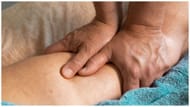Leg cramps can be extremely painful. Those who have experienced it might have thought about tonic water for leg cramps. But does it work?
Quinine, an ingredient in tonic water, has long been used to cure or prevent leg cramps. Quinine may lessen cramping because of its ability to relax muscles. It's crucial to remember that tonic water's quinine level is quite low when compared to the therapeutic amounts found in prescription drugs, and its efficacy in treating leg cramps has not been thoroughly studied.
How often should you drink tonic water for leg cramps?
Tonic water is a carbonated drink which is a popular mixer for cocktails. Due to the addition of quinine, a bitter substance extracted from the cinchona tree's bark, it is well-known for its fizz and distinct flavor.
Moderation is the key when it comes to how often you drink tonic water for leg cramps. Because tonic water contains sugar and calories, consuming too much of it might have negative health effects. Your doctor will advise you on how much to drink if they think that tonic water might help with leg cramps.
Role of quinine in easing leg cramps

Although the exact method by which quinine relieves leg cramps is not entirely understood, it is thought to be related to its capacity to obstruct muscle cells' regular processes. Quinine may lessen the frequency and severity of muscle contractions as well as modify the excitability of muscle fibers, which may alleviate cramping.
Although quinine has been used to treat leg cramps, its application has been increasingly restricted because of safety concerns and possible negative consequences, particularly when taken in large amounts. The US Food and Drug Administration (FDA) has cautioned against using quinine as a first-line treatment for leg cramps due to potential hazards.
Risks involved with excessive tonic water for leg cramps

Because of its quinine concentration and other ingredients, tonic water can be a pleasant drink, but it's vital to be aware of the risks involved with taking too much of it. Here are some things to think about:
Quinine Toxicity: Quinine, an ingredient in tonic water, has been linked to possible negative effects and toxicity when ingested in excess. Quinine poisoning can cause symptoms such as headaches, nausea, ringing in the ears (tinnitus), and, in extreme situations, cinchonism (a disorder marked by symptoms like disorientation, visual difficulties, and heart problems).
Calorie and sugar content: Tonic water frequently has calories and sugar added to it. Frequent use of sugary beverages raises the chance of developing diseases such as type 2 diabetes, obesity, and dental issues in addition to making weight gain more likely.
Drug interactions: Quinine has the potential to interact with a number of drugs, including blood pressure and antibiotics.
It is advisable to speak with a healthcare provider before taking tonic water for leg cramps or any other health issue. Depending on your particular health situation, they can offer you tailored guidance on how much, if any, to consume. Avoiding self-prescription or self-treatment without appropriate medical supervision is vital.
Another strategy to reduce cramps is to stay hydrated. Fluids aid in muscular relaxation and keep muscle cells hydrated and less irritated. It becomes crucial to consume sodium and electrolyte replacements while you hydrate to make up for lost fluids. It's advisable to stay away from diuretics like alcohol, coffee, and others if you have trouble staying properly hydrated.
